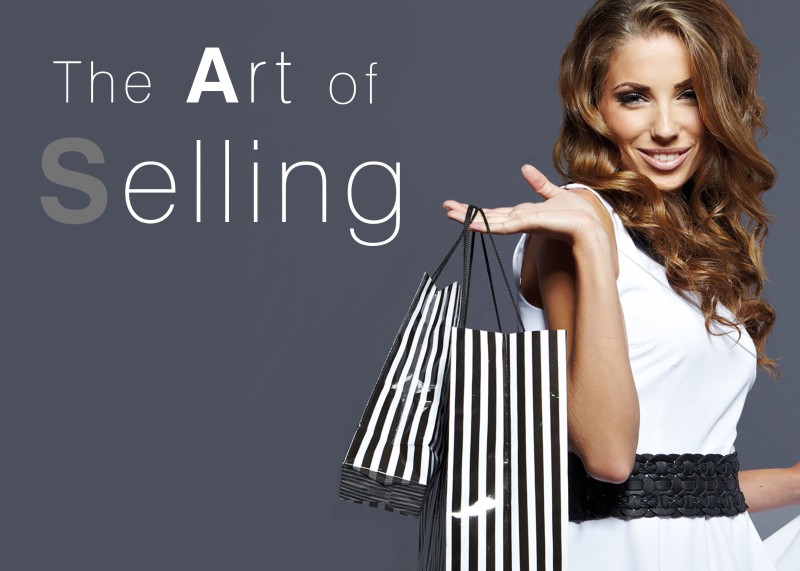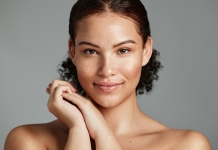The Art of Selling
Successful salons know that retail sales are essential if you want to grow as a business. But how much retail should you be doing and how do you encourage employees to retail products to their clients?

Running a successful beauty salon requires many different skills. First of all, you need to find your business niche and establish something that will appeal to your local clientele. Researching and devising your brands and treatment menu takes time and careful consideration. Then you must hire the right sort of people for your business and ensure they are correctly trained. And even when everything is set up and looking great, you must market your treatments to your clientele and ensure you have a full appointments book.
But that's not all. A key consideration for salons is also retail. Anybody who performs facials knows that the professional treatment is only part of the story – you must ensure that your client has the correct homecare routine, and the products to match it. And ideally, you will be the ones retailing those products, thus boosting profits and ensuring your client gets the results
they want.
“To be successful and profitable you need to aim for a 50:50 service to retail split," explains Dermalogica Education Executive Victoria Schofield. “The retail sales are where most of your profit comes from in a typical skin centre business. The average split for a skin centre is about 10-13 per cent retail, but the best are doing 90 per cent in retail to 10 per cent in services!”
Marsha Abrahams, managing director of Boost Beauty Solutions, the distributor for Juliette Armand Skincare, explains that retails sales are vital not just to boost your products but also to ensure the client is happy in the long term. “Every time you let someone walk out of your salon without trying to add a retail sale to their visit, it is money out of your back pocket.
You are doing yourself and your treatment an injustice because the client will go and buy a moisturiser and a cleanser from the local chemist or supermarket and they will go around saying ‘facials aren't worth it, it did nothing for my skin' because they are not using the right homecare to go with the treatment. If you had just trusted yourself enough to make sure they were going home with the right products for their skin you would have a customer singing your praises and more money in the till for less work from yourself.”
Confidence in your skills
To ensure you make the most of your retail sales, training your staff and ensuring they're confident in their selling skills is crucial. Victoria recommends practice and lots of it! “Learning a structured retailing process and practicing it on friends and colleagues until it becomes natural and second nature is key. Hold internal staff training sessions to role play the
conversation and allow everyone to experience it from the clients' perspective. Would they have purchased? How did they feel during the
interaction? Trouble shoot on the feedback to improve the customer experience and the staff's objection handling skills.
“Ensure that you leave yourself enough time at the end of a skin treatment to go through a personalised prescription with homecare advice, make this a standard part of the service and explain to clients when booking that this is what you offer. You also need to focus on retaining that client and continue to forge a strong relationship. Offer a rebooking incentive and/or loyalty card for services and/or retail purchases and add value that cannot be found online.
Perhaps offer a free (low cost) service with each retail purchase such as an eyebrow shape or nail paint.”
Following up with your client is vital – to make sure they're getting the results they want and to ensure they come back to you for treatments and products. “Always follow up with new clients post treatment and check in with how they're getting on with their products,” says Victoria. “Stay in touch through as many mediums as possible; Facebook, Instagram, email newsletters, WhatsApp groups, to ensure your business is regularly capturing their attention and encouraging repeat visits and purchases.”
All this might sound daunting but it really isn't, as Marsha explains. “Selling products doesn't need to be difficult, if you have the right brand that you believe in and are passionate about and do some homework so you know the benefits of the products for your clients – you are 80 per cent there. If in doubt invest in retail sales training. It will be the best investment you made.”
Tips for Successful Retailing
Marie-Louise Coster, the owner of All About Mi Beauty Boutique & Training School, has some useful tips for successful retailing
• Carry out a thorough consultation with your client, find out about her/his
lifestyle, concerns and current routine.
• Look for gaps in the client's current routine - Does she/he have a cleanser but no toner? Has she/he just bought a new cleanser and toner but not have
a day and night cream? Does the client currently exfoliate and mask Whatever is missing try retailing first as the client is more inclined to buy something they don't already have. You still need to tell them about the rest of the range because as time goes on and she/he runs out of their current products they can replace them with the other products you recommend from the range.
• Focus on four key products – If you only recommend one or two products
the client will easily say no, if you recommend four the client will at least buy one. Any more than four products and I think it starts to become a little intense and over powering – unless of course the client has no routine whatsoever and needs a full routine.
• Sell to your client's needs – clients can easily tell when you are just trying
to sell them anything, so sell according to what you have discovered during
the consultation.
• Do your retailing in the treatment room – it is a common mistake to wait until the client has dressed and made her/his way to reception to attempt to retail. By this point, in the client's mind, the treatment is over and she/he is now thinking about what else they need to do that day – whatever it may be, their mind is no longer on the treatment.
• Describe how the products will treat their concerns by using the same terminology that the client has used about their skin. This will make them feel like you have listened and allow them to understand without being blinded by jargon.
• Give the product to the client to hold – once the client holds the product and it's in her/his hands it becomes their property, an extension of them making them not want to leave without it.
• Don't offer samples until after the client has decided on what she/he is going to purchase – if you offer samples first the client won't buy anything. Samples are a selling tool and if you recommend four products to your client and she/he buys two by all means give her/him samples of the other two
products but don't offer them first as you will lose a sale.
• Ensure that you give your client a prescription sheet of what you recommend she/he uses at home and how to use them. Make a note on there what you consider to be their priority products, what they bought and anything you gave a sample of. When I worked for Clarins, after I first qualified as a therapist, I had ladies who kept their prescriptions in their purse and every time they came in out it would come.
Years after leaving Clarins they still used to stop me in the street with said prescriptions asking what I thought they should buy next! Accompany your prescription with a product brochure so as the client has something to refer to.





